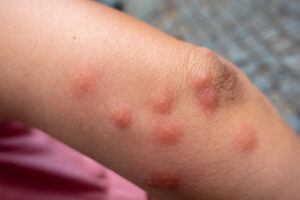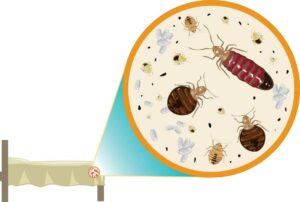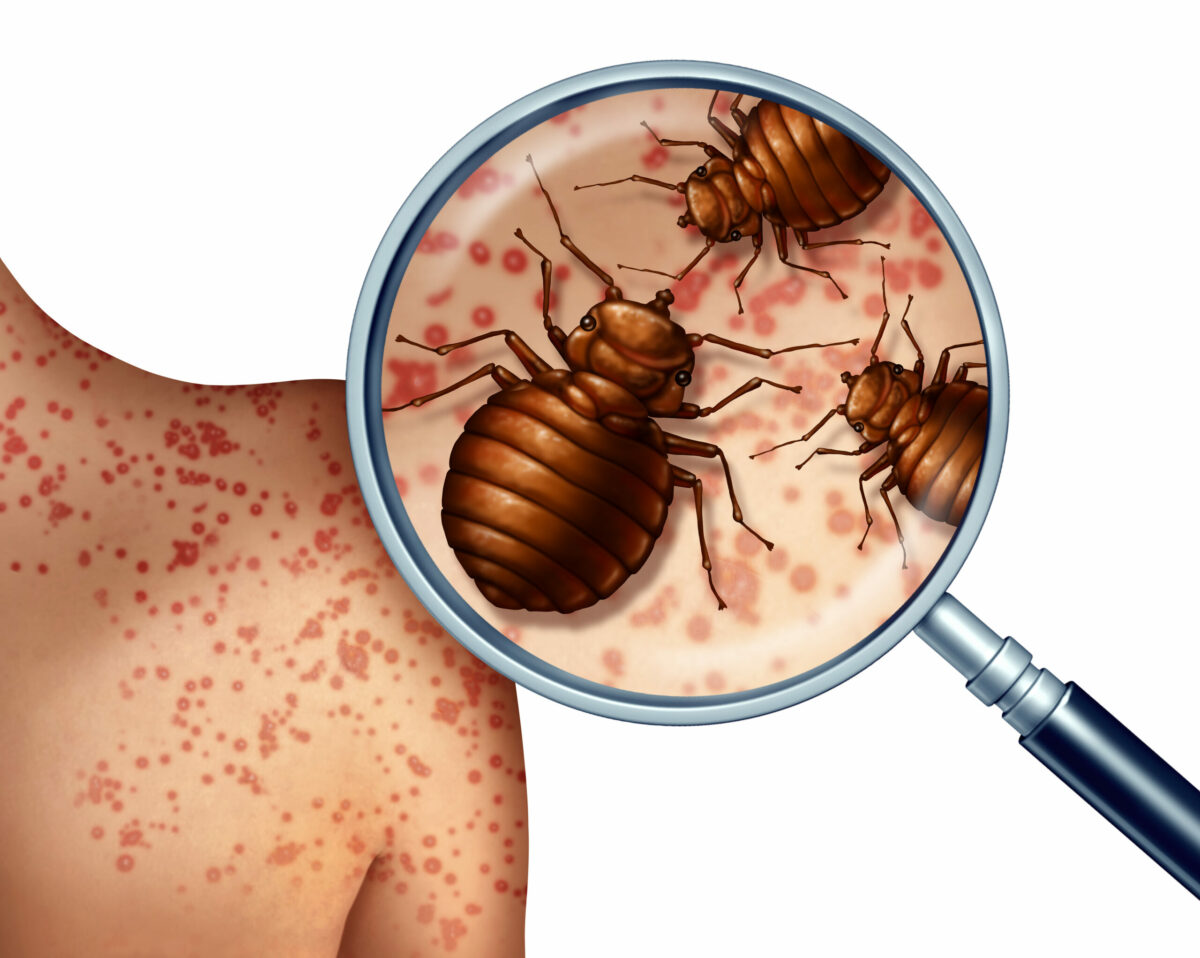Bed bugs seem to have created an urban myth following that unfortunately doesn’t help much if you are dealing with this problem.
Throughout my many treatments a plethora of questions and stories of solutions have been presented to me of all types. Many similar worries were a common denominator for many clients and giving them clarity brought them a sense of calm and hope.
Here I’ll share with you all some frequently asked questions on bed bugs I feel needs to be known in order to better understand how to prepare yourself to commence the process of ridding yourself of this hideous bug! Check out my “Facts and Myths” blog for some interesting facts.
Does Bleach Kill Bed Bug Eggs?
Technically, bleach will kill just about anything. The problem with treating a bed bug problem with bleach is the pattern in which bed bugs lay their eggs.
Bed bug eggs could be as small as a pinhead and sticky in nature so they can be placed any ware, from bed ruffles to small slits and cracks wherever they are available including items and belongings around the vicinity of the person affected.
Bedbugs can detect your breath (carbon dioxide) up to 15 feet so the radius of infestation can be drastic. It would be unrealistic to eradicate all eggs with just bleach. Eggs are highly resistible to exterior stress and also adaptable to pesticides and chemicals ensuring some will survive initial attempt of eradication but without a residual a resurgence is inevitable.
I have personally met many that have treated furniture and floors with bleach only to experience another comeback months after.
Another factor here is that bleach is not an organic solution to bed bugs and can also be harmful to our kids and beloved pets! This can be an extreme temporary fix to bed bug activity but most likely not a permanent solution.
What Do Bed Bug Bites Look Like On Human Skin?
 People react differently to bed bug bites depending on your blood type according to some studies done on the subject. From no symptoms at all to severe rash, but one thing is for sure……they all suck!!!! (Pun intended!)
People react differently to bed bug bites depending on your blood type according to some studies done on the subject. From no symptoms at all to severe rash, but one thing is for sure……they all suck!!!! (Pun intended!)
Without getting scientific…… Bed bugs actually pierces your skin twice (ouch!) The first piercing is to inject you with an anesthesia/blood thinner and the second is to actually suck up your blood.
Bed bugs are very sensitive to movement, so any slight twitch on your end will cause the bed bug to pull out and scramble. When you stop moving it’ll start the process all over again.
For this reason, bedbug bites are usually in patterns like circles, triangles and straight lines, and at times forming clumps. They usually migrate to the warmer parts of your body, but once infested, you’re getting bit all over.
What Is The Life Cycle Of A Bed Bug?
A bed bug starts as an egg. An egg can hatch within 10 to 15 days from when it was produced and under certain circumstances such as temperature and blood availability, can remain unhatched up to a year!

Once a bedbug is born it needs to undergo 5 molts (growth spurts) in order to become an adult and on each attempt it needs a feeding of your wonderful blood…. Oh those nasty vampires!!
This process takes about 4 to 6 weeks depending on the room temperature. At this stage usually they will bite about once a week or more depending on the availability of blood.
As an adult a bed bug may live about four to six months but, once again depending on blood availability and temperature, (when too cold, they will enter a “dormant” state, in which they may stay alive up to a year!), their lifespan may vary.
For more details on this matter check out my “Bed bugs 101…The Basics” article.
Why Do People Get Bed Bugs?
Bed bugs are master hitchhikers and will latch on to and hide in any seam, wrinkle, fold and stay undetected for the entire ride back into your holy sanctuary…..your home!
Bed bugs have been found everywhere, from movie theaters to commercial airplanes….so usually bedbugs are unknowingly introduced into your home unbeknownst to you or your loved ones.
Also a big factor is neighboring units that are infested can spread bed bugs throughout causing a great problem within the structure of the building itself.
I’ve personally had dealt with these types of infestations to the point where at times I would see them crawling inside of light fixtures!
For all of us that love “old” furniture and like to visit flea markets, salvation army’s and such…… be careful! Studies has shown many of these places have been reported to have had bed bug issues.
So it is always a good idea to buy new or treat the piece with an organic agent. If you suspect bed bug activity, check out my “Identify if you have bed bugs” blog for some helpful tips.
What do bed bugs look like?
Bed bugs are small, wingless insects with a flat, oval-shaped body. Adult bed bugs are brown and about a quarter-inch in diameter, resembling an apple seed in size and shape. After feeding, they may appear redder in color. For more on bed bugs check out our blog on bed bug characteristics.
Can bed bugs spread disease?
While bed bugs are a nuisance and their bites can cause itching and loss of sleep, they are not known to spread diseases to humans.
How can you tell if you have bed bugs?
Signs of a bed bug infestation include small blood stains on your sheets, bed bug excrement that appears as small black spots, shed skins, and a sweet musty odor. You may also notice itchy bite marks on your body, typically in a line or cluster.
Can bed bugs live in your hair?
No, bed bugs do not live in human hair. They prefer to hide in cracks and crevices close to where people sleep. Unlike lice, bed bugs do not have the body structure to navigate through hair.
How do you get rid of bed bugs?
Getting rid of bed bugs usually requires professional treatment. This can include heat treatment, insecticide application, or a combination of methods. It is important to thoroughly clean and vacuum the affected areas and wash all bedding and clothing in hot water.
Conclusion
I’m hoping with this article I’ve clarified some frequently asked questions about bed bugs and its causes and in subsequent articles I’ll answer more of your questions pertaining to the subject.
Bed bugs have become a great problem not just in America but throughout the world, so the need of information on this topic has become necessary.
Feel free to ask any questions of your own or if you have any tips to share with us I’ll be delighted to hear from you! Comment below or contact me.
Regards,
Wilson
Wilson@greenorganicpestcontrol.com

































